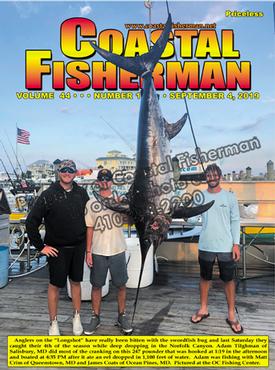


Article by Capt. Steve Katz
 Even keel
Even keel
While “even keel” is often referred to as a sailing idiom which means everything is stable or under control, in the powerboat world we now have a Seakeeper or gyroscopic stabilizer to keep the powerboats on an even keel! Ship stabilizing gyroscopes are a technology developed in the 19th century. The World War I transport USS Henderson, completed in 1917, was the first large ship with gyro stabilizers .
A marine gyro stabilizer like the Seakeeper, Quick, Mitsubishi, Tohmei or VEEM brand Gyro comprises of a spinning flywheel mounted in a gimbal frame allowing two of the three possible rotational degrees of freedom. The frame is rigidly mounted to a sturdy location on the vessel. Most often, the gyro stabilizer devices are located in the engine room of the vessel, but can be mounted in any location.
You can think of a gyro stabilizer refit project in terms to a generator installation. For example, a Seakeeper is similar in size, weight, complexity and includes the need for clearance for service access, plumbing, electrical connections and a convenient location to mount the unit. The main difference is that a gyro stabilizer exerts both upward and downward forces into the boats structure with much more force than just the weight of the unit itself.
A gyro stabilizer works to keep a boat stabilized by providing a counteracting torque to the rolling forces created by wind and waves acting on the boat. The amount of gyro force needed to keep a boat stabilized is based on the physical characteristics of the boat, including factors such as weight, length, width, draft, dead rise, vessel usage, operating hours/year and more complex measurements such as roll period, waterline measurements and transverse metacentric height.
A gyro stabilizer is often rated by its stabilizing capacity in newton meters per second (NMS) and many manufacturers have adopted this number in their model names making it easy to compare.
Gyro stabilization can be accomplished with one or multiple units that add up to the necessary capacity for a given boat. Using a Seakeeper as an example; if your boat does not have room for a large Seakeeper 9 (9,000 N-M-S) you could install two smaller Seakeeper 5’s (5,000 N-M-S/each) and still have the same stabilizing power.
Where to install a gyro stabilizer?
Often a gyro stabilizer is installed by a boat manufacturer while the boat is under construction.
A lot of engineering and design work by the boat builder go into the selection for the installation location. When retrofitting an existing boat, there are a lot more variables and options. Installing a gyro stabilizer in the engine room make a lot of sense and is most often the best location for many reasons. Though a gyro stabilizer can be installed almost anywhere on a boat, it does not have to be on the centerline like some may believe and it can be forward or aft of the engine room. Viking has traditionally designed their new boats for gyro stabilizer installation under the aft cockpit deck.
Mounting a gyro stabilizer in the bow is not recommended due to excessive movement and forces that may affect the functionality of the gyro stabilizer.
How does a Gyro stabilizer work and what’s inside the sphere?
The heart of the unit is a spinning, heavy flywheel secured inside a sphere. In the case of a Seakeeper, this sphere has all the air vacuumed out to reduce friction, allowing the flywheel to spin at speeds up to 10,000RPM with a minimum amount of electrical power needed.
This gyro’s sphere is mounted by gimbals to a rigid frame. This frame is bolted to the boats main structure. The motion of the sphere (precession) is a naturally occurring physics principal; the sphere wants to naturally move (rotate fore and aft) as rolling forces are acted upon it by the vessel. This is what produces the counteracting torque. Excessive precession is controlled by a brake system comprised by hydraulic cylinders and a computer controlled valve system.
Operating a Gyro requires minimal training and operator intervention. Once the control system is powered on, the Gyro itself is started. This can take up to an hour for the flywheel to reach the rated speed necessary for full capacity stabilization. Once the flywheel is spinning at its predetermined RPM, the braking system is then unlocked, allowing the gyro to precess and provide stabilization. If you determine you needed to stop the stabilization, the sphere can quickly be locked to prevent precession and allow the boat to operate unaided by the stabilization. When the gyro is locked, the flywheel can still remain spinning at full speed, allowing the unit to be put back into service at a moment’s notice. At the end of the day when the gyro is no longer needed, the unit can be powered off and the flywheel will begin to slow down over a period of time that can be more than an hour.
Most gyros have a minimal maintenance schedule, with periodic service required every 1,000 hours or so. Many brands have a seawater cooling system with a heat exchanger that requires zinc replacements and other traditional marine cooling system maintenance. The mechanical parts of the gyro often include hydraulic systems and mounting hardware maintenance or replacement on a regular basis.
Thinking about getting a gyro?
Manufacturers now offer units for boats as small as 20-feet and there are now a few different competing brands of gyros providing boaters with a greater selection.
Adding a gyro stabilizer to an existing boat or purchasing one as an option on a new boat may change your outlook on boating and fishing forever.
Captain Steve Katz is the owner of Steve’s Marine Service and holds NMEA, AMEI and NMEA2000 certificates along with ABYC Master Technician certification and factory training from many manufacturers. To reach Steve, call 410-231-3191.